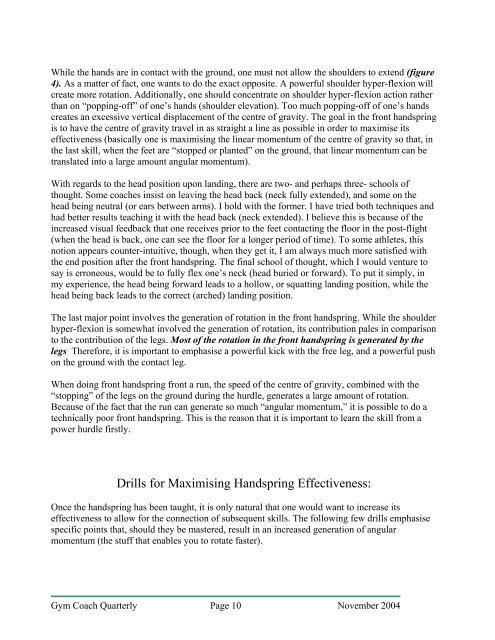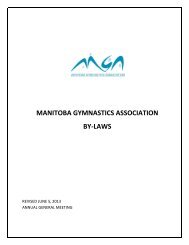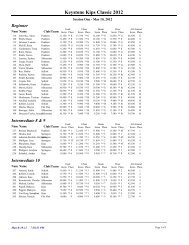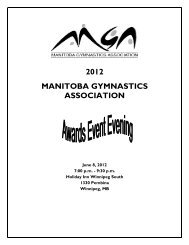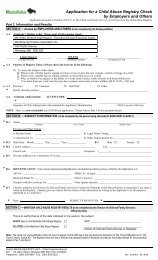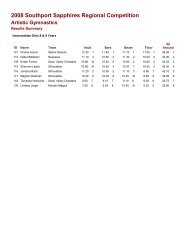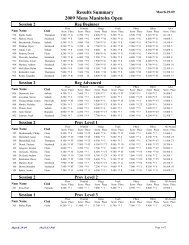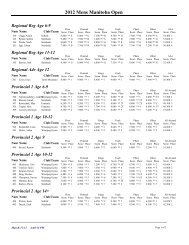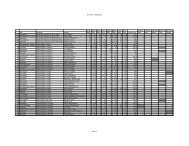View - Manitoba Gymnastics Association
View - Manitoba Gymnastics Association
View - Manitoba Gymnastics Association
You also want an ePaper? Increase the reach of your titles
YUMPU automatically turns print PDFs into web optimized ePapers that Google loves.
While the hands are in contact with the ground, one must not allow the shoulders to extend (figure4). As a matter of fact, one wants to do the exact opposite. A powerful shoulder hyper-flexion willcreate more rotation. Additionally, one should concentrate on shoulder hyper-flexion action ratherthan on “popping-off” of one’s hands (shoulder elevation). Too much popping-off of one’s handscreates an excessive vertical displacement of the centre of gravity. The goal in the front handspringis to have the centre of gravity travel in as straight a line as possible in order to maximise itseffectiveness (basically one is maximising the linear momentum of the centre of gravity so that, inthe last skill, when the feet are “stopped or planted” on the ground, that linear momentum can betranslated into a large amount angular momentum).With regards to the head position upon landing, there are two- and perhaps three- schools ofthought. Some coaches insist on leaving the head back (neck fully extended), and some on thehead being neutral (or ears between arms). I hold with the former. I have tried both techniques andhad better results teaching it with the head back (neck extended). I believe this is because of theincreased visual feedback that one receives prior to the feet contacting the floor in the post-flight(when the head is back, one can see the floor for a longer period of time). To some athletes, thisnotion appears counter-intuitive, though, when they get it, I am always much more satisfied withthe end position after the front handspring. The final school of thought, which I would venture tosay is erroneous, would be to fully flex one’s neck (head buried or forward). To put it simply, inmy experience, the head being forward leads to a hollow, or squatting landing position, while thehead being back leads to the correct (arched) landing position.The last major point involves the generation of rotation in the front handspring. While the shoulderhyper-flexion is somewhat involved the generation of rotation, its contribution pales in comparisonto the contribution of the legs. Most of the rotation in the front handspring is generated by thelegs Therefore, it is important to emphasise a powerful kick with the free leg, and a powerful pushon the ground with the contact leg.When doing front handspring front a run, the speed of the centre of gravity, combined with the“stopping” of the legs on the ground during the hurdle, generates a large amount of rotation.Because of the fact that the run can generate so much “angular momentum,” it is possible to do atechnically poor front handspring. This is the reason that it is important to learn the skill from apower hurdle firstly.Drills for Maximising Handspring Effectiveness:Once the handspring has been taught, it is only natural that one would want to increase itseffectiveness to allow for the connection of subsequent skills. The following few drills emphasisespecific points that, should they be mastered, result in an increased generation of angularmomentum (the stuff that enables you to rotate faster).Gym Coach Quarterly Page 10 November 2004


